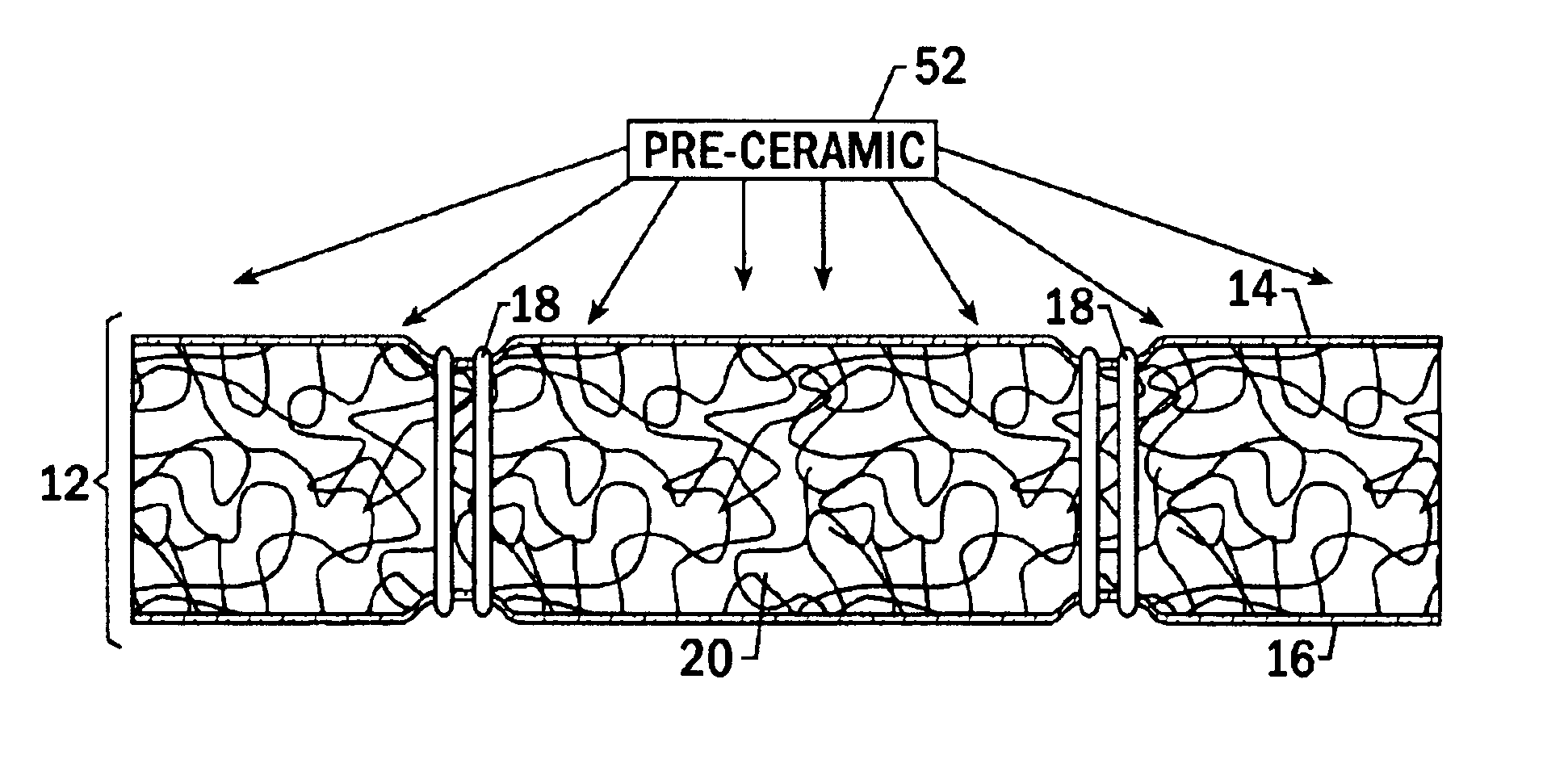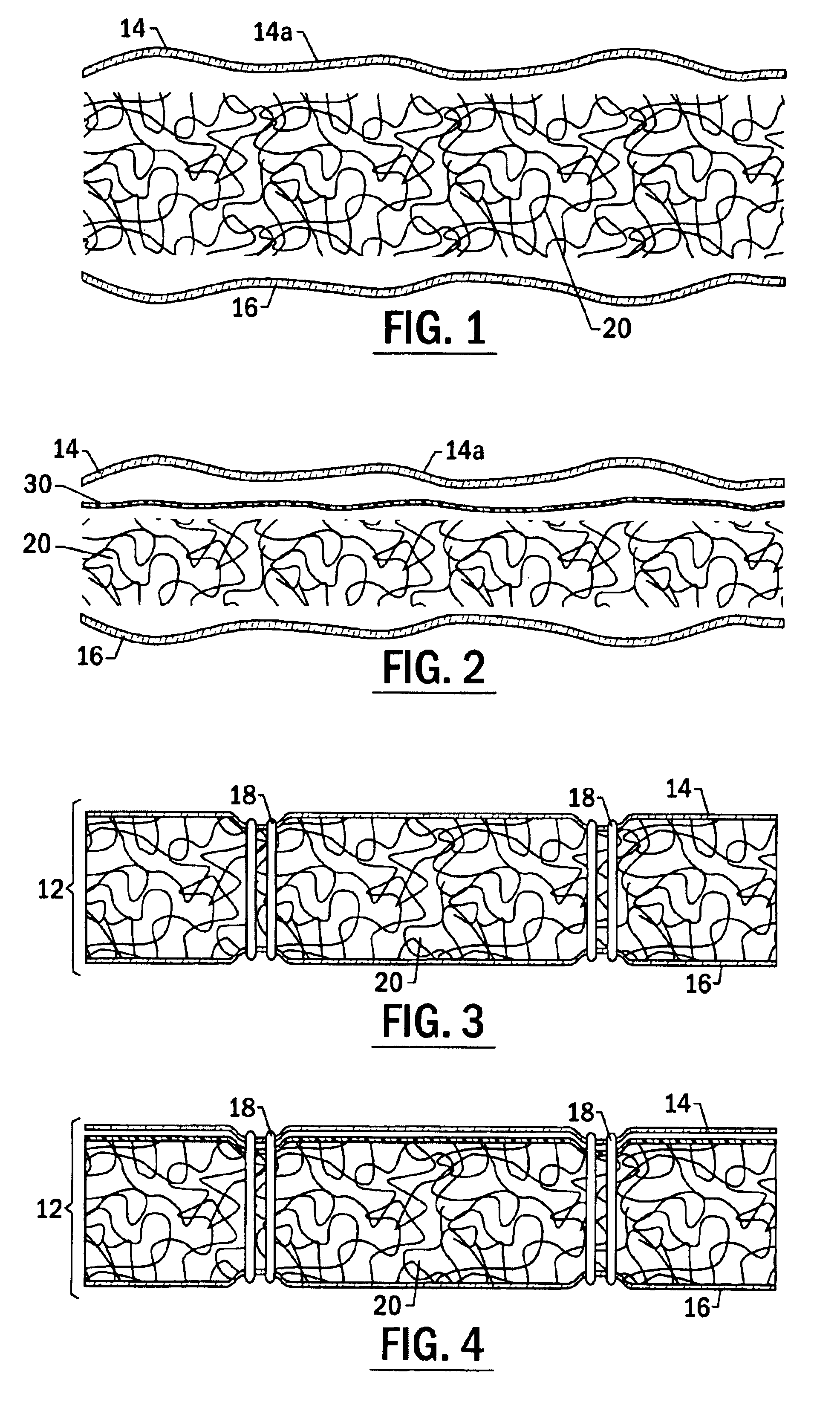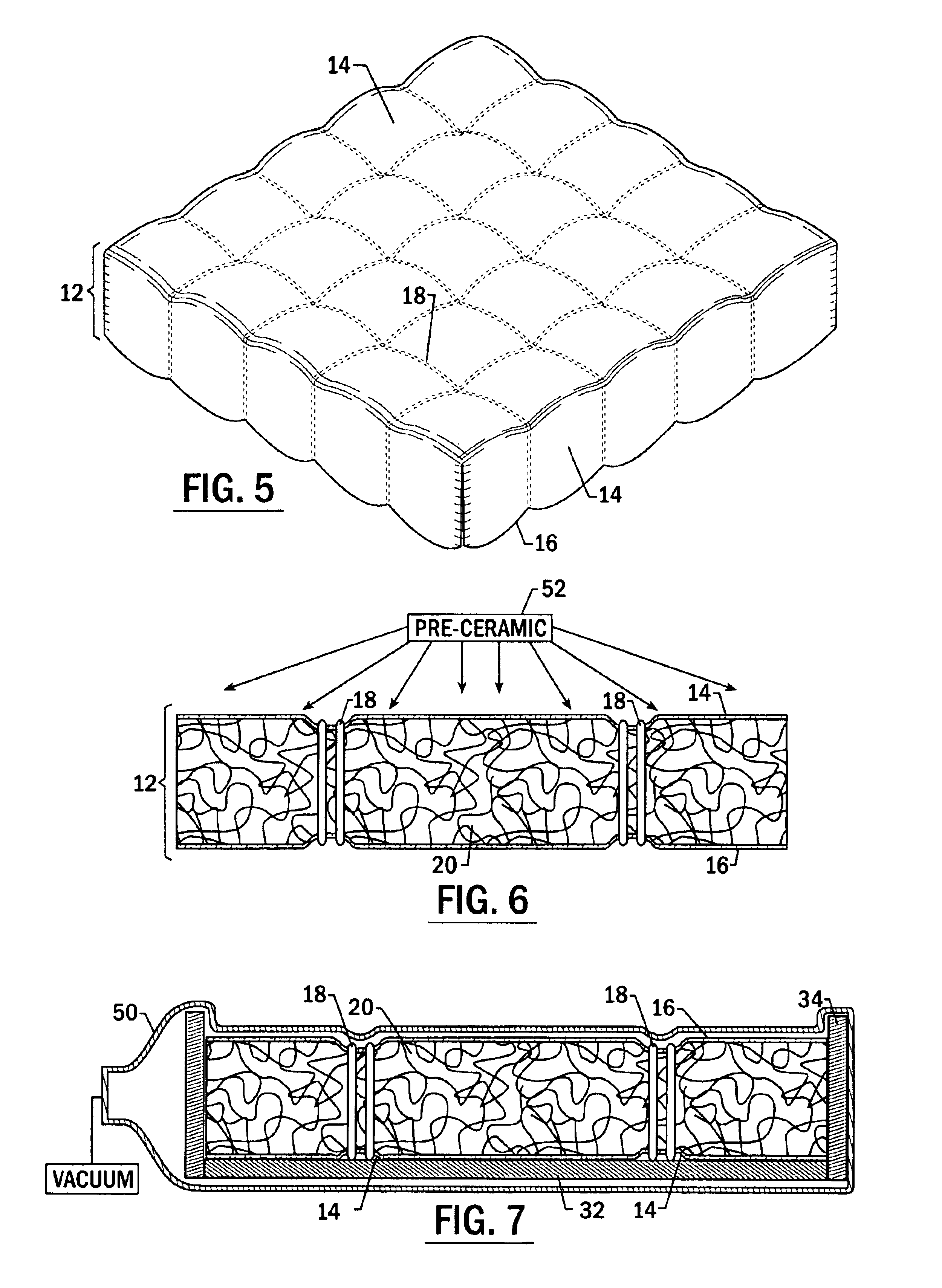Method of forming a flexible insulation blanket having a ceramic matrix composite outer layer
a technology of ceramic matrix and flexible insulation, which is applied in the direction of transportation and packaging, other domestic objects, mechanical equipment, etc., can solve the problems of unsuitable vehicles' windward surfaces or vehicles' surfaces, the outer layer of fabric does not provide a uniform substrate for forming a flat, smooth surface, and the use of traditional flexible blankets. achieve the effect of complete insulative efficiency of the batting, reduce the overall temperature to which the blanket is exposed, and reduce the interference of the boundary layer
- Summary
- Abstract
- Description
- Claims
- Application Information
AI Technical Summary
Benefits of technology
Problems solved by technology
Method used
Image
Examples
Embodiment Construction
The present invention now will be described more fully hereinafter with reference to the accompanying drawings, in which preferred embodiments of the invention are shown. This invention may, however, be embodied in many different forms and should not be construed as limited to the embodiments set forth herein; rather, these embodiments are provided so that this disclosure will be thorough and complete, and will fully convey the scope of the invention to those skilled in the art. Like numbers refer to like elements throughout.
Referring to FIG. 1, the CMC coated flexible insulation blanket of the invention is constructed of various layers of material. It is anticipated that the invented insulation will be most often used to insulate the outer surface of a spacecraft such as the Space Shuttle though the insulation is not limited to such use. For purposes of this description, “outer” or “Outer Mold Line (OML)” components are those components, which are disposed at a greater distance fro...
PUM
| Property | Measurement | Unit |
|---|---|---|
| thickness | aaaaa | aaaaa |
| temperature | aaaaa | aaaaa |
| temperatures | aaaaa | aaaaa |
Abstract
Description
Claims
Application Information
 Login to View More
Login to View More - R&D
- Intellectual Property
- Life Sciences
- Materials
- Tech Scout
- Unparalleled Data Quality
- Higher Quality Content
- 60% Fewer Hallucinations
Browse by: Latest US Patents, China's latest patents, Technical Efficacy Thesaurus, Application Domain, Technology Topic, Popular Technical Reports.
© 2025 PatSnap. All rights reserved.Legal|Privacy policy|Modern Slavery Act Transparency Statement|Sitemap|About US| Contact US: help@patsnap.com



